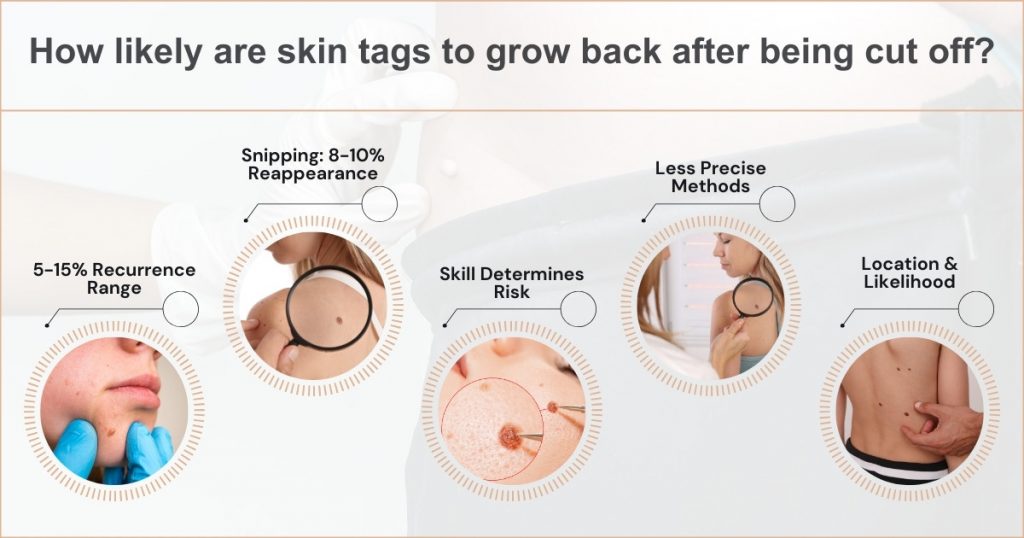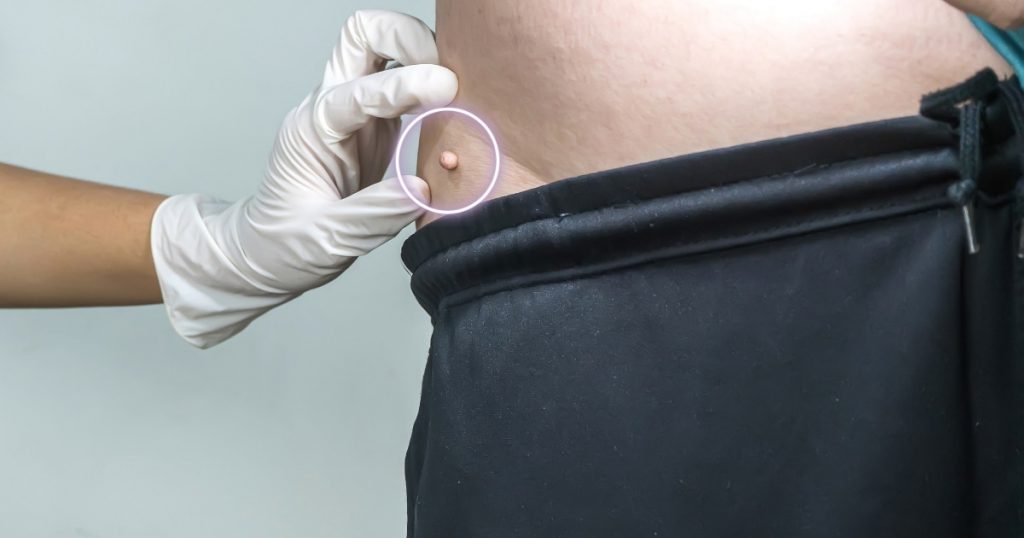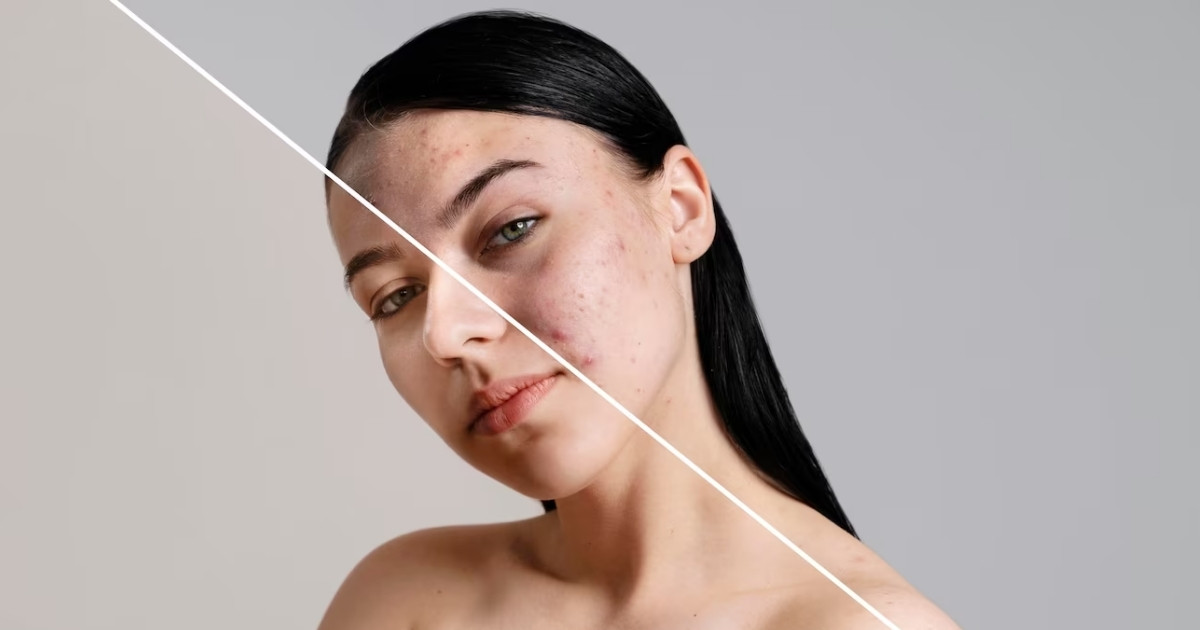Skin tags are common benign skin growths that often don’t cause problems but can be removed for cosmetic reasons or due to physical irritation. A question on many patients’ minds considering skin tag removal is “skin tag removal does it hurt?” The procedures are relatively quick but can cause some mild to moderate pain depending on the elimination method and location of the lesions. This article explores different skin tag removal techniques patients may undergo if they decide eliminating the tags are worth enduring some temporary discomfort.
Skin tag removal does it hurt?
Best skin tag removal in dubai techniques like snipping them off with scissors or tying off the stalk can cause mild pain. Using numbing creams or solutions can help ease any discomfort during the removal process.
- Options like cryotherapy or laser removal typically cause less pain than scissor excision
- Discomfort level usually depends on skin tag size and location on the body
- Pain after removal normally goes away within a few hours as numbness wears off
- Over-the-counter pain medications can relieve pain or soreness at removal site
- Stalk removal methods tend to be more painful than methods destroying the lesion
- Numbing the area first helps minimize any pain during the skin tag removal
What causes skin tags to reappear after removal?
Skin tags can grow back after removal if the entire base or “root” is not eliminated along with the visible part. Anything left under the skin can lead to recurrence.
- Not removing deep enough below the surface skin allows remaining tissue to regrow
- Using removal methods that do not penetrate far down leaves behind cells to reform lesions
- Getting only the visible portion and none of the lower embedded cells results in skin tags returning
- Faulty technique or equipment limitations prevent accessing all epidermal layers
- The cauterising effect of techniques like cryosurgery might not reach deeper underlying tissue
- Genetic predisposition leads to new lesion formation from residual dermal components
How likely are skin tags to grow back after being cut off?

There is roughly a 5-10% chance for skin tags to reappear after being cut off, if proper technique is used to get all cells. The likelihood rises if any tissue remains.
Book A Consultation With Dr Shehzadi Tasneem
Top-rated Plastic Surgeon For Skin Tag Removal in Dubai
Installment Plan Available
- Reported skin tag recurrence rates to range from less than five percent up to fifteen percent after removal
- Research shows snipping off skin tags has a recurrence likelihood of eight to ten percent
- The regrowth risk depends heavily on the practitioner’s skill and precision in include the base cells
- Methods less surgically precise, like topical elimination, have higher regrowth probabilities
- Location factors impact recurrence rates as thicker-skin areas make full removal more difficult
- Patients prone to developing multiple tags see higher chances any could return after elimination
What percentage of removed skin tags will return?
Studies show up to 15% of removed skin tags can eventually grow back, with most data reporting 5-10% recurrence rates if eliminated properly at the base cells.
| Timeframe | Regrowth Odds | Details |
| < 6 months | 5-15% | Early recurrence |
| 6-12 months | 5-10% additional | Typical reemergence window |
| 1-2 years | <5% more | Late recurrences |
| > 2 years | <1% additional | Rare but occurs |
Research shows removed skin tags can regrow in the same location at steadily decreasing rates for two years following elimination, if the removal fails to extract all associated cells.
Can remaining root cause skin tag to regrow after removal?

Any skin tag tissue remaining beneath the skin after visible removal allows the possibility of the lesion to regrow from the residual cells and root over time.
- Partial removal leaving basal tissue behind nearly ensures eventual skin tag recurrence
- Just eliminating the visible stalk while retaining the embedded base leads to high recurrence likelihood
- Reports find up to eighty percent of incompletely excised tags will return, often within several months
- The dermal cells remaining can reproduce forming a new stalk and eventual visible skin protrusion
- The initial immune response from removal may keep the area clear temporarily before regrowth happens
- Research indicates reemergence happens more quickly with larger original skin tag size
How soon can skin tags recur in the same spot after elimination?
Skin tags can begin reforming as soon as two months after removal in the same location if any subsurface cells were left behind, though regrowth typically takes six to twelve months.
- Case reports document histologically verified recurrence just nine weeks post-removal
- Around twenty percent of reoccurring skin tags resurface in the first six months after elimination
- Data shows the majority of recurrences happen between six months and a year and a half later
- Speed of reemergence depends on volume of residual basal tissue left beneath the elimination site
- Larger original skin tags have demonstrated faster reappearance rates in some patient reviews
- Full regrowth to the original tag’s size often takes between one and two years post-removal
Which removal techniques prevent skin tags from growing back?
The most effective skin tag removal methods to prevent regrowth target both the visible portion and the underlying basal tissue using surgical excision, electrodesiccation or laser ablation.
- Excision done precisely with curved iris scissors reduces recurrence likelihood to just five to ten percent
- Electrosurgery using high-frequency electrical currents destroys cells preventing regrowth
- Ablative fractional laser targeting both epidermal and dermal layers stops regrowth potential
- Cryosurgery done in double-freeze thaw cycles ensures full tissue death preventing recurrence
- Chemical cauterization agents like trichloroacetic acid must penetrate deep enough for permanence
- Methods only targeting the visible stalk without reaching basal cells causes incomplete removal
How to stop skin tags from coming back after taking them off?
Ensuring complete removal of the entire lesion cells including the embedded basal tissue minimizes chances of skin tag recurrence after elimination.
| Prevention Tips | Details |
| Remove entire basal tissue | Penetrate under & around visible stalk |
| Use magnifying tools | Precisely identify all tissue |
| Double freeze times | Ensure full cellular destruction |
| Angle excision blades | Cut wider under stalk base |
| Have histological analysis | Confirm full cell eradication |
These tips help maximize removal precision and completeness during skin tag elimination procedures, destroying cells and preventing recurrence.
Is it necessary to remove skin tags if they keep coming back?
Skin tag removal is mainly for cosmetic reasons or if they become irritated, so recurrence generally does not require repeat elimination unless they cause physical symptoms or appearance concerns.
- Eliminating recurring skin tags carries potential scarring risks plus the discomfort of the procedure
- The vast majority of skin tags pose no medical issues making removal for only cosmetics optional
- Methods like excision and electrodesiccation can leave small permanent scar tissue on the skin
- As age spots, skin tags naturally increase with age so removing all is impractical
- Clothing choices can often conceal appearance issues if desired instead of repeat removal
- Monitoring for changes like pain, inflammation or uncharacteristic growth necessitates reexcision
Is permanent skin tag removal possible or do they eventually regrow?

Permanent skin tag elimination is possible if the removal method fully destroys or excises all epidermal and deeper dermal lesion cells down to the basal layer, preventing regrowth.
- Total surgical excision or cellular destruction methods can successfully eradicate skin tags forever
- Studies show at least ninety to ninety-five percent of properly excised tags do not recur long-term
- Repeat eliminations or technique adjustments might be needed in highly recurrent cases
- Inherited genetic predisposition leads some patients to continually develop new lesions
- Locations with thicker skin like neck folds might have higher recurrence likelihood
- Histology is sometimes performed after removal to confirm complete cell eradication
While no skin tag removal method is entirely painless, techniques like cryotherapy tend to hurt less during treatment by using cold to numb the area first. Medicated numbing creams can also ease discomfort from methods like scissor excision. The sting or pinch sensation many feel asking “skin tag removal does it hurt?” lasts a short time. As long as the dermatologist uses enough freezing cycles for cryotherapy or penetrates deep enough past the entire visible stalk and lower tissue layers for an excision technique, skin tag recurrence odds are also low. So the bit of momentary pain from the question “does skin tag removal hurt?” is often worth finally resolving nuisance lesions.
Book a consultation with Dr Shehzadi Tasneem Sultan, a distinguished plastic surgeon, for personalized care in aesthetic procedures. With her extensive training from the Allama Iqbal Medical College and the Fellowship of the College of Physicians and Surgeons of Pakistan, Dr Sultan brings a wealth of expertise in body contouring, facial rejuvenation, and paediatric plastic surgery. Her career spans prestigious roles in the UK and UAE, ensuring you receive world-class treatment tailored to your needs. Embrace your natural beauty and confidence with Dr Sultan’s advanced, patient-focused approach.
Explore the expertise of the renowned Dr. Shehzadi Tasneem, acclaimed as the best female plastic surgeon in Dubai for transformative and personalized cosmetic enhancements.












